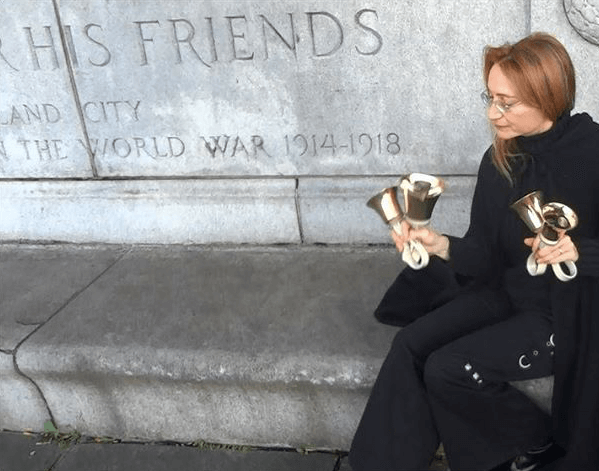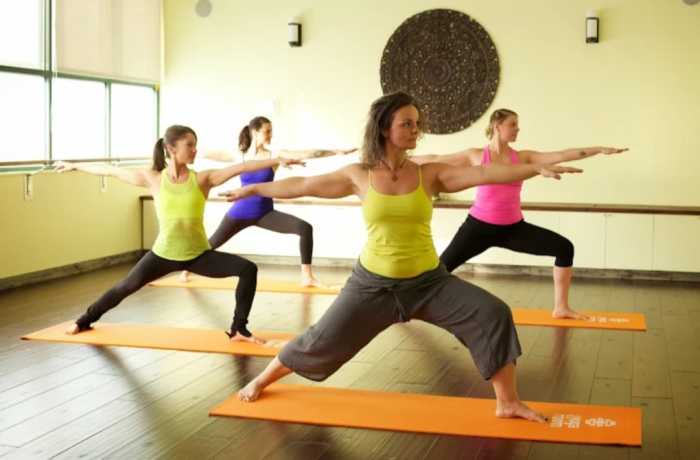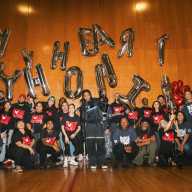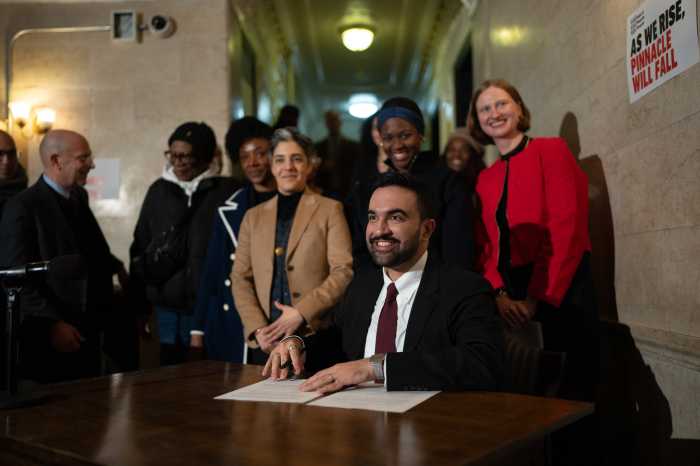Natalia Paruz gained fame as the “Saw Lady,” the street musician for finding beautiful yet haunting sounds with a violin bow and a common household saw.
But instead of playing her iconic saw, Paruz used her handbells to play “Taps,” the piece of music normally played at military funerals on a bugle, to honor soldiers at Astoria’s World War I memorial on Sunday, Nov. 11. Her performance was part of a Veterans Day ceremony honoring the 100th anniversary of the signing of the Armistice that ended “The Great War.”
“This was in honor of all of the soldiers,” said Paruz. “But with a particular emphasis on bellringers and to connect today’s bellringers.”
Paruz decided to film herself performing after learning about an Anglo-German effort to play thousands of church bells in unison to commemorate the centennial.
Under the Defense of the Realm Act, Britain curtailed the amount of church bells could be rung during World War I as a means to prevent signaling to enemy soldiers or spies. So the Anglo-German project was created to signal peace and friendship between the two nations. It just so happened that a large number of the British soldiers killed during World War I were bellringers.
“It’s our roots and I really connect to history,” said Paruz, who said that she wanted to do something for the 100th anniversary but could not find anything happening in the community.
The Astoria artist, who has lived in the neighborhood for 27 years, wanted to learn more about her community’s history.
“For us it happened so long ago but for the people that who fought … it’s significant,” said Paruz.
But unbeknownst to Paruz, her short YouTube tribute would shine light on another less known part of Astoria history: the history of how the “Saw Lady” came to be.
Paruz has always been artists and since a young age had wanted to be dancer. But a promising career was cut short one day when while walking out of Lincoln Center.
“I was hit by a car,” said Paruz, who suffered a massive injury to her upper back. “Turning my head sideways is difficult and turning it around, forget it.”
After recuperating, Paruz’s parents took their daughter on a trip to Austria. It was was there that she became fascinated by bells, having noticed that at cow bells were sold at every souvenir shop. It was also there that she witnessed somebody playing a saw for the first time and was immediately fell in love.
“The entire instrument moves when you play it and creates waves in the air. It’s very physical and visual,” she said. “It’s just like dance.”




































